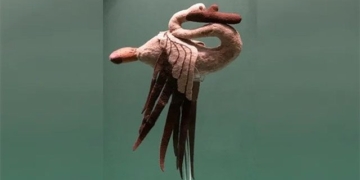A crewed spacecraft from NASA is set to land in the “promised land,” a place where extraterrestrial life may be hiding, in 2025.
A new study from NASA claims that some resilient bacteria may be surviving on the Moon – Earth’s closest neighbor.
According to Live Science, a research team led by planetary scientist Prabal Saxena from NASA’s Goddard Space Flight Center suggests that life in the form of microorganisms may exist in the harsh conditions of the Moon’s South Pole.

These organisms could be “tourists” from Earth. (Illustrative image).
This finding is based on the latest analysis of the extent to which certain microorganisms can survive, suggesting potential ecological niches for specific forms of life.
“We are still researching to understand which specific organisms might be best suited to survive in such areas and which regions in these polar areas are most suitable to support life,” Dr. Saxena revealed.
Organic geochemist Heather Graham – a member of the research team, also from Goddard – stated that these organisms may be “tourists” from Earth, settling and thriving on this natural satellite.
Similar to how meteorites from other planets fall to Earth, our planet also ejects small debris onto its companion, potentially carrying organic molecules and possibly more complete forms of life.
Previously, there have even been studies suggesting that spacecraft from Earth could carry microorganisms that can withstand the space environment to the Moon, such as tardigrades.
If all goes well, NASA’s Artemis 3 spacecraft will be present on the Moon in 2025, and astronauts will have a prime opportunity to explore this “promised land” of extraterrestrial life.


















































